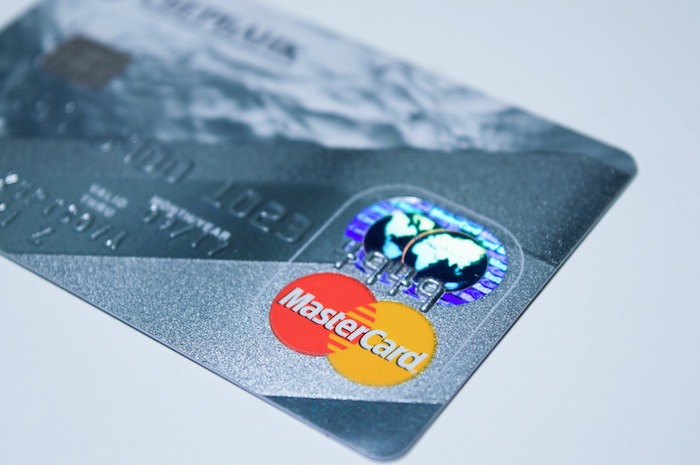As more and more American consumers choose to pay for goods and services using their credit cards, transaction volume continues to grow. According to Nilson Report, in 2019, the processed purchase volume was $7.584 trillion, an increase of 8.2% over the previous year in the U.S.A.
Historically, merchants have paid the credit card fees and of course, the processing fees paid by U.S. merchants that accepted those cards as payment also grew in 2019. In that same year, processing fees came up to $116.43 billion as reported by Nilson Report, an increase of 7.7% over 2018.
As those costs continue to climb — total credit card interchange fees collected by Visa and Mastercard more than doubled between 2012 and 2019, according to a June 21, 2020 Wall Street Journal article by AnnaMaria Andriotis and Harriet Torry.
Most merchants opt to raise their prices for all customers, which practically forces customers paying with cash or debit to subsidize someone else’s credit card rewards. Another subset of merchants passes the fees on to the consumer by surcharging the credit card fees. Two examples include the gasoline industry and the government who add a fee to transactions that involve credit cards.
How accepting credit card payments benefits businesses
Credit card fees aside, many businesses have come to enjoy the benefits that accepting credit card payments offer them.
In an article posted on Forbes.com titled Accepting Credit Cards: Why It’s Worth It, author Elie Y. Katz lists the following benefits:
- Accepting credit cards and displaying credit card logos near your point of sale system at the checkout counter increases your business’s legitimacy.
- Credit cards encourage impulse buying and improve your cash flow.
- Convenience and safety for cardholders.
- Credit cards increase the amount of each sale up to 100%.
While we know businesses benefit from credit card acceptance, the actual cost and who pays for this cost is a renewed debate.
However, the question remains:
Is there something merchants can do to offset credit card processing fees?
For the most part, yes, but merchants will need to decide if the feature of offsetting fees is truly a benefit in their unique industry, business and location.
Enter Credit Card Surcharging
A payment credit card surcharge is an additional fee that a merchant adds to a consumer’s bill when he or she uses a credit card for payment.
Surcharging allows a business to pass on the cost of acceptance to customers who choose to pay with credit cards. However, customers continue to have no-fee options, like paying with a debit card, for example. Surcharging is also referred to as “zero-fee” or even “free” credit card processing.
Closely related to surcharging is “cash discounting”, which is when the customer receives a discount equivalent to the credit card processing fee if he or she pays in cash, by paper check or by debit card.
While both of these methods pass the cost of credit card processing onto the consumer, the difference between the two is that with surcharging, the extra cost is added to the advertised price. With cash discounting the cost is deducted from the advertised price when a credit card is not used.
Let’s take a $100 sale as an example: If you are using a surcharging method, then the cost to your client will be $100, plus the fees. If you are using cash discounting then the cost to your client will be $100, minus the fees.
We can also add the 3.5% surcharge and discount so it becomes $103.50, $96.50 if discounted, or $100 if nothing is done.
The following table outlines the three means by which merchants can recoup the cost of credit card processing.
Program Type |
What It Does |
Example |
|
Surcharging
|
Extra charge is applied to applicable credit card purchases to cover the cost of processing | Gasoline stations offer cash prices and credit card prices |
|
Cash discounting
|
A discount is applied to cash, debit, & all other non-credit card transactions | Customers are presented with an option for a cash discount at the point of sale |
|
Convenience fees
|
A fixed fee is applied to credit card purchases | When there is a surcharge fee added to the transaction, just like the government implements |
Steps & rules merchants need to consider when it comes to surcharging with Visa, Mastercard, American Express, & Discover
Here are the steps to follow and rules to observe after a merchant makes sure it’s legal to impose a surcharge based on their state or US Territory laws:
Take inventory of the credit cards the business accepts because that will affect the merchant’s policies. Visa, Mastercard, American Express and Discover each have set their own guidelines for merchants wanting to add surcharges for credit cards — which means that a merchant should meet all of the applicable requirements before they get started
Surcharge amounts are limited to the merchant’s effective rate for credit card transactions, capped at 4%. In other words, merchants cannot profit from surcharges; they can only recoup their baseline costs.
Merchants must also post appropriate notice inside their store, both at the entrance and at the point of sale. Similar rules apply to ecommerce businesses at the checkout page of their websites.
Merchants need to include the surcharge amount on the receipt as a separate line item. The surcharge also needs to be included in the network authorization request and settlement. (Note: American Express is the only brand with an exception to this rule).
Finally, merchants need to make sure that their payment gateway or processing equipment is reprogrammed to accurately record the surcharges in accordance with the card network requirements.
The Pros and Cons for merchants considering imposing a credit card surcharge
From some merchants’ perspectives, surcharging makes perfect sense. Why should they have to pay a fee each time a customer chooses to pay with a credit card?
Of course, many customers may not see it that way. From their perspective, it shouldn’t cost extra to use one payment method instead of another. Many consumers are unaware that merchants cover the costs of credit card processing in the first place.
Until recently, surcharging wasn’t much of an issue. Most merchants simply accepted the costs of credit card processing as a necessary expense that would lead to increased sales and higher overall profits. So, what triggered merchants to look for ways to avoid paying credit card processing fees?
One major factor that has led to the growing popularity of surcharging is the growing use of rewards cards by consumers. Earning frequent flier miles and cash-back rewards has proven quite popular. Consumers have been incentivized to use such rewards instead of other payment methods. Naturally, someone has to pay for those perks, and it’s not the issuing banks that advertise them. Instead, merchants have had to subsidize these credit card perks through higher interchange fees.
This, in turn, has led merchants to seek out ways to save money on their credit card processing. Passing these costs onto their customers, who are also the beneficiaries is an obvious first consideration.
Any merchant that is seriously considering adopting a surcharging program should first consider these pros and cons:
Pros
- Lower credit card processing costs: Merchants will save money overall on their credit card processing costs by implementing surcharging. However, they won’t entirely eliminate those costs. There are some recurring and incidental merchant account fees they’ll need to pay, including a monthly fee for adding a surcharging program to their account, which is typically $20/mo.
- Encourages customers to use other payment methods: Though some say that cash is dying and that digital payments are the future, “old-fashioned” payment methods will persist for a long time. Older customers often still prefer paying in cash, while some customers might not have a bank account at all, let alone a credit card. Particularly, cash discount programs incentivize consumers to save money by using a payment method other than their credit card. Having said that, we should also take into account the fact that a business can offer both a surcharge and a cash discount program.
Cons
- Notice requirements & signage: Merchants must not have a surcharging program without providing adequate notice to their customers that they’ll have to pay extra for using their credit cards. Meeting these requirements will involve some cost and effort on the merchant’s part, their merchant account provider can usually help them.
- Lost sales: The worst potential downside for merchants to surcharging is that some customers will undoubtedly walk out of their store or abandon their website upon realizing it will cost them extra to use their credit cards. Merchants should consider what their competitors are doing before implementing surcharging because, if they aren’t surcharging, merchants put themselves at a competitive disadvantage that may cost them more money in lost sales than what they would save through surcharging. Surcharging is an accepted practice in some industries (gas stations and taxi cabs, for example) but not all.
Conclusion
Every merchant should seriously consider whether or not imposing a surcharge will be a good long-term strategy for them in their business.
We believe the opportunity to surcharge and discount credit card fees will turn the industry on its head. It is certainly a big change and merchants who lead the way may gain a higher market share. Examples of early adopters may include small-margin industries and non-profit organizations.
We hope that this article is helpful to business owners in their research and wish them success in adding value to the marketplace as well as serving their customers.
If you have additional questions about this article, you can reach out to MSNI at support@merchantsupport.com or call at 1-650-692-9700.
FAQs About Credit Card Surcharges
Are there limits on credit card surcharges?
Yes. Merchants cannot charge more than 4% of each transaction.
Can you apply surcharges to debit cards?
No. Surcharges can be added to credit cards only.
Can varying surcharges be applied to different types of credit cards?
Yes. Merchants can apply varying surcharges by card brand or card product, but not both. For example, a retailer may impose surcharges only on American Express cards or only on certain products, such as Visa Signature cards.
Do merchants have to notify consumers of credit card surcharges?
Yes. Merchants must disclose any surcharges to consumers both at the point of sale and on the receipt.
References:
- https://www.forbes.com/sites/billhardekopf/2018/07/16/do-people-really-spend-more-with-credit-cards/?sh=6172ab31c19a; https://link.springer.com/article/10.1023/A:1008196717017;https://www.nerdwallet.com/article/credit-cards/credit-cards-make-you-spend-more
- As reported in Money.com on September 14, 2020, surcharges are currently legal in all U.S. states except for four and the territory of Puerto Rico: Kansas, Colorado, Massachusetts, Connecticut.



